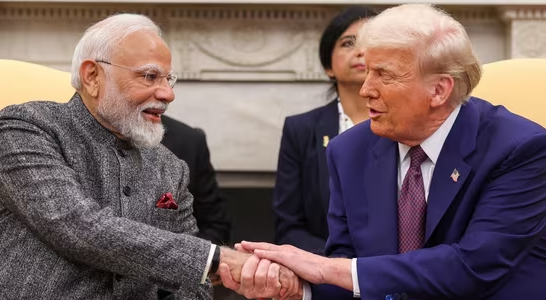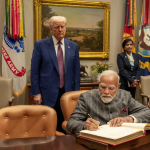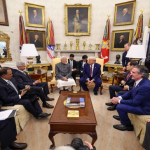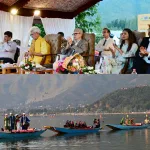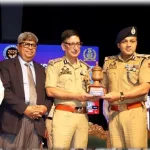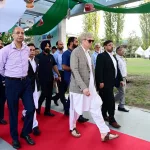In a dazzling display of strategic vision and personal rapport, Prime Minister Narendra Modi’s recent visit to the United States in February 2025 has set the stage for an era of renewed cooperation and transformative partnerships between two of the world’s most influential democracies. Against the backdrop of an increasingly complex global landscape, the visit showcased a masterclass in diplomacy, marked by high-level meetings, landmark agreements, and an inspiring confluence of ideas that spanned defence, trade, technology, energy, and cultural exchange.
At the heart of this historic journey was the much-anticipated meeting between Prime Minister Modi and President Donald J. Trump in Washington, D.C. In an atmosphere that was as congenial as it was consequential, the two leaders not only reaffirmed the bedrock of the India-U.S. Comprehensive Global Strategic Partnership but also demonstrated a genuine personal rapport that resonated far beyond policy papers and strategic memos. Their conversation, punctuated by mutual admiration and forward-looking optimism, culminated in the launch of the ambitious U.S.-India COMPACT for the 21st Century—a transformative roadmap designed to deliver tangible results across defence, commerce, and technology within the year.
In an era defined by intricate challenges—from rebalancing global tariffs and tackling illegal immigration to addressing the ramifications of the Russia-Ukraine issue—Modi’s discussions with President Trump were both candid and constructive. The leaders deliberated on the urgent need to streamline tariff structures to foster a more equitable trading relationship. They also exchanged views on sensitive judicial issues, such as the extradition of Tahawwur Rana, recognising that robust legal cooperation is pivotal in the fight against terrorism. This frank dialogue underscored their shared commitment to maintaining a rules-based international order, a cornerstone for global stability.
A standout moment during the visit was Prime Minister Modi’s engaging discussion with Elon Musk, who, in his dual role as the head of the U.S. Department of Government Efficiency (DOGE) and CEO of Tesla, symbolised the seamless fusion of public policy and private innovation. In an exchange that was as energetic as it was visionary, Modi and Musk explored the boundless possibilities of emerging technologies—from space exploration and artificial intelligence to sustainable development. Musk’s presence, accentuated by the warmth of his family’s company, added a distinctly personal dimension to the dialogue, reinforcing the belief that when innovation is nurtured, boundaries dissolve and progress becomes inevitable.
The visit was also a testament to the two nations unyielding commitment to security. In his meeting with U.S. National Security Advisor Michael Waltz, Prime Minister Modi delved into discussions centred on strategic technologies and defence industrial cooperation. The dialogue, which included pivotal discussions on civil nuclear energy and the deployment of small modular reactors, laid the groundwork for an enduring partnership aimed at fortifying both nations’ security frameworks. Equally significant was the meeting with U.S. Director of National Intelligence Tulsi Gabbard, where the emphasis was placed on bolstering intelligence sharing, particularly in the realms of counterterrorism and cybersecurity. These high-level engagements highlighted a shared understanding: that in today’s volatile global environment, the integration of traditional and technological security measures is indispensable.
One of the most consequential outcomes of the visit was the announcement of a new ten-year major defence partnership framework. This comprehensive agreement is poised to not only enhance the interoperability of the two nations’ armed forces through expanded defence sales and co-production initiatives but also to foster the development of cutting-edge autonomous systems via the newly established Autonomous Systems Industry Alliance (ASIA). Such initiatives are testament to the strategic foresight of both nations, ensuring they remain at the vanguard of modern warfare and intelligence-sharing capabilities.
In parallel, enhanced military collaboration was underscored by plans for expanded joint exercises such as the “Tiger Triumph” tri-service exercise. This commitment to operational readiness and mutual trust stands as a bulwark against both conventional and unconventional threats, ensuring that the armed forces of India and the United States are ever-prepared to respond to emerging global challenges.
On the economic front, the visit heralded a bold new chapter with the introduction of “Mission 500”—an ambitious initiative aiming to double bilateral trade to $500 billion by 2030. This visionary target is complemented by ongoing negotiations for a comprehensive multi-sector Bilateral Trade Agreement, expected to streamline trade practices and dismantle barriers to market access. Modi’s discussions emphasised the importance of greenfield investments and regulatory reforms designed to create an enabling environment for business expansion, ensuring that the economic benefits of the strengthened partnership are widely shared.
Energy security, a linchpin of national stability, featured prominently in the agenda. The U.S.-India Energy Security Partnership was designed to guarantee reliable, sustainable, and affordable energy supplies through joint initiatives in oil, gas, and liquefied natural gas (LNG). Complementing this was the reaffirmation of the U.S.-India 123 Civil Nuclear Agreement, aimed at advancing civil nuclear cooperation through the development of U.S.-designed reactors in India. Special emphasis was placed on the development of small modular reactors—an innovation set to revolutionise energy generation by being both cost-effective and environmentally sustainable.
Perhaps one of the most forward-looking initiatives announced was the U.S.-India TRUST (Transforming the Relationship Utilizing Strategic Technology) initiative. This comprehensive programme is poised to catalyse innovation by fostering collaboration among governments, academia, and the private sector in fields as diverse as artificial intelligence, semiconductors, and quantum computing. In tandem, the INDUS Innovation Bridge aims to bolster industry–academic partnerships and create secure, trusted supply chains for vital technological components, thereby enhancing both nations’ self-reliance and resilience in an increasingly interconnected global economy.
The discussion also extended to strategic mineral recovery and civil space cooperation. Recognising the critical role of raw materials in technological advancement, efforts to accelerate the recovery of essential minerals like lithium and cobalt were highlighted. Joint space projects, including NASA-ISRO collaboration, are poised to propel both nations into a leadership role in global space exploration, signalling a new era of scientific and exploratory endeavours.
Beyond the bilateral sphere, Modi’s visit also placed a strong emphasis on multilateral and regional cooperation. The Quad and Indo-Pacific frameworks were reaffirmed as vital to ensuring a free, open, and rules-based Indo-Pacific region. With plans for a Quad Leaders’ Summit in New Delhi and enhanced maritime initiatives, both nations are setting a robust agenda to safeguard regional trade routes and maritime security.
Moreover, initiatives in the Middle East and the Indian Ocean region were discussed with an eye towards building broader, inclusive partnerships that extend the benefits of this strategic alliance to a wider international community. The commitment to undersea cable projects and digital infrastructure investments further underlines the forward-looking nature of this expansive agenda.
No diplomatic mission is complete without the human element, and Modi’s visit was replete with initiatives aimed at strengthening cultural and academic ties. Efforts to expand academic and talent exchanges, such as joint degree programmes and the establishment of Centres of Excellence, are designed to nurture a generation of leaders who embody the collaborative spirit of this new partnership. Modi’s engagement on public platforms—celebrating World Radio Day and inviting public contributions for the famed Mann Ki Baat session—reinforced his commitment to transparent communication and grassroots connectivity.
As the curtains fall on a visit that will be remembered as a watershed moment in India-U.S. relations, the resounding message is one of hope, progress, and unwavering commitment. Prime Minister Modi’s visit to the United States not only deepened the strategic alliance between the two nations but also set in motion a cascade of initiatives that promise to reshape the geopolitical landscape for decades to come.
In an era where global challenges demand collaborative solutions and shared visions, the personal camaraderie between Modi and Trump, coupled with the strategic foresight of both leaders, stands as a beacon of what can be achieved when nations unite for a common purpose. The renewed partnership, with its blend of defence, economic, technological, and cultural dimensions, is poised to deliver a legacy of enduring peace, stability, and prosperity—a testament to the power of visionary leadership and the timeless value of friendship across borders.
(The Author is international criminal lawyer and director of research at New Delhi based think tank, Centre for Integrated and Holistic Studies. X @imrahulpawa)


